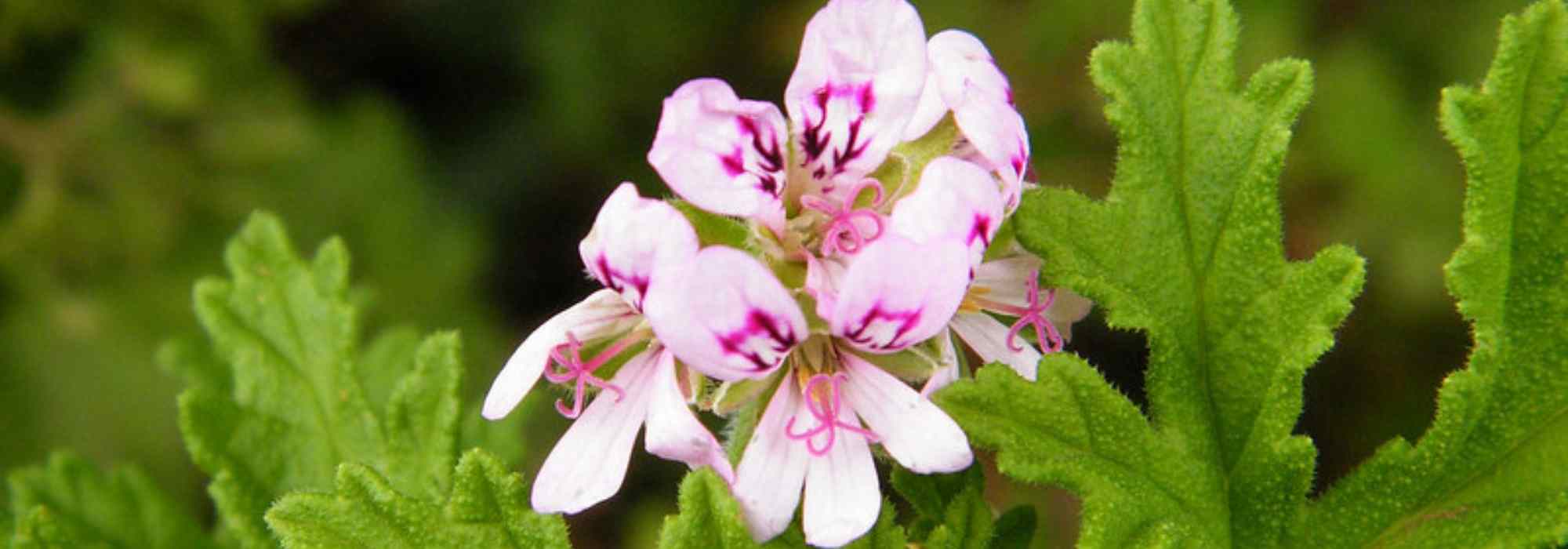
10 pelargoniums with scented foliage
for a fragrant balcony or garden
Contents
We all know pelargoniums, also called balcony geraniums, those small airy flowers that brighten pots and window boxes with colourful touches. But fewer people know that there are pelargoniums with scented foliage, which can be used to create a fragrant balcony or garden corner. Fragrances of rose, mint, maritime pine, lemon or citronella, spices, pepper or even hazelnut, scented foliage pelargoniums come in many scents, to combine with each other or with other fragrant flowers.
Easy to grow, the scented foliage pelargoniums are perennials that are not hardy. Sensitive to frost, they are grown as annuals unless brought indoors for winter. Simply give them a sunny or semi-shaded position in very sunny southern regions. Then plant them, between March and May, in well-drained soil and water occasionally. This gives an abundant flowering that lasts several months, usually from June to September. Discover our selection of scented foliage pelargoniums.
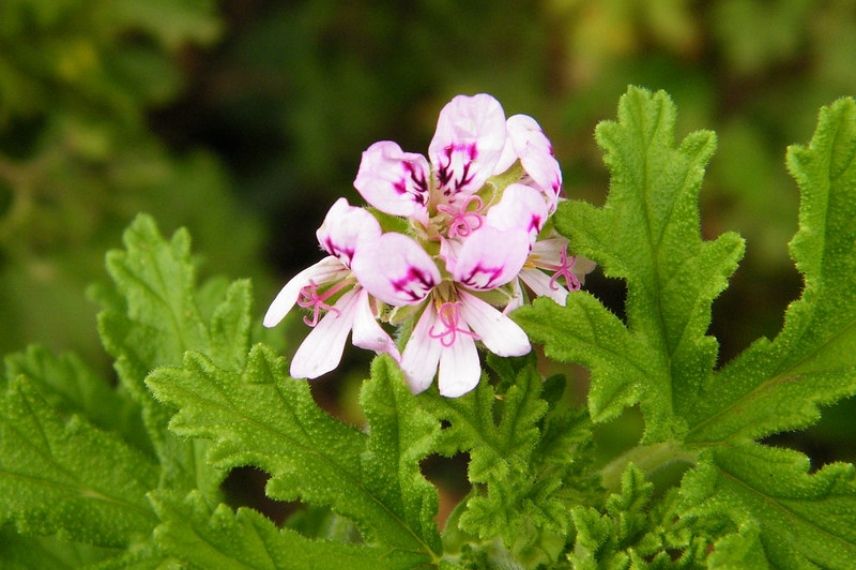
Geranium Rosat with rose scent (Photo: Scamperdale)
Pelargonium 'Attar of Roses': a sweet rose scent
Pélargonium ‘Attar of Roses’ sees life through rose-tinted glasses. Its small, airy flowers display that delicate colour. Its veined, divided leaves release the scent of roses when touched. Its fragrance helps repel mosquitoes and is even used in perfumery. Its flowers are also edible and the English use them to flavour their jellies. If you wish, you can sample their scents and flavours and add them to fruit salads or potpourri. Pelargonium ‘Attar of Roses’ has a flowering period from June to September. Its flowers, smaller than those of hybrids, give it a more authentic look and can reach up to 60 cm in height.
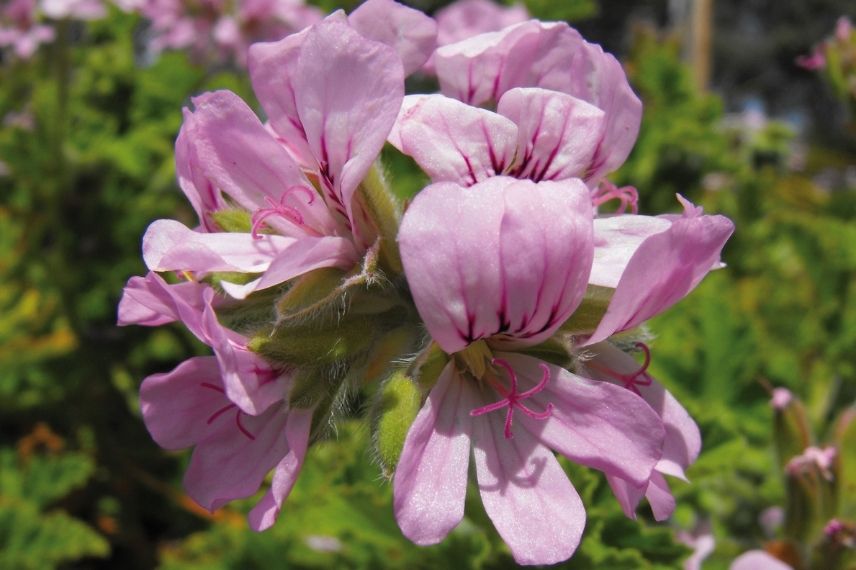
Pelargonium ‘Attar of Roses’ (photo: Stickpen)
Pelargonium graveolens: mint and rose scents
Pelargonium graveolens is a shrub with evergreen, soft and velvety leaves, whose scent evolves through the seasons. At first balsamic and menthol-like, their aroma resembles the scent of roses when the Pelargonium flowers between June and September. Its lobed and undulate leaves are adorned with clusters of 10 to 15 small pink flowers streaked with garnet red. Pelargonium graveolens, also called strongly scented pelargonium, is highly fragrant. It is used to produce many hybrids known as rose geraniums, widely used in perfumery for their rose-scented essential oil. The plant is fertile and produces some fruit, unlike hybrids of the Rosat group. Pelargonium graveolens grows easily in full sun.
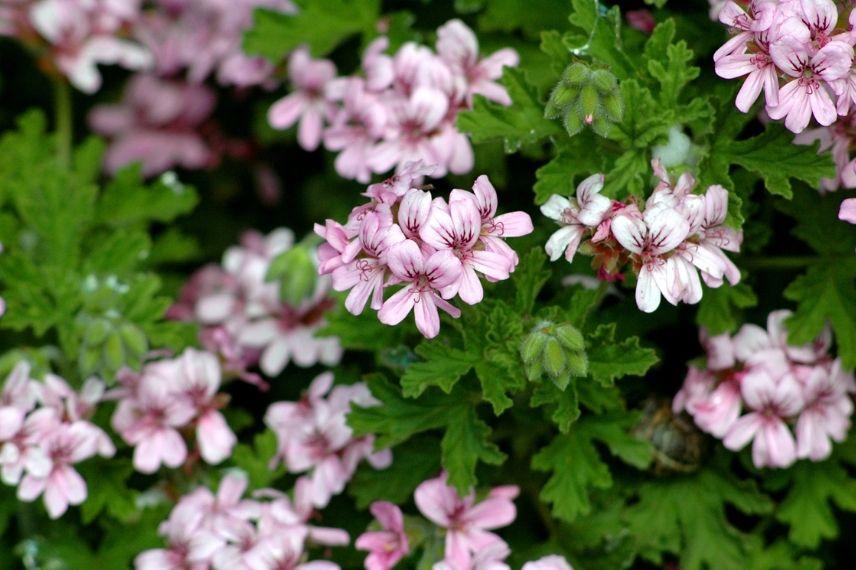
Pelargonium graveolens (photo: Eric Hunt)
Discover other Pelargonium - Geranium
View all →Available in 1 sizes
Available in 1 sizes
Available in 1 sizes
Available in 1 sizes
Available in 1 sizes
Available in 1 sizes
Available in 1 sizes
Available in 2 sizes
Available in 2 sizes
Available in 1 sizes
Pélargonium odorant 'Chocolate': fresh menthol scent
Pélargonium odorant ‘Chocolate’ is recognised by its green, evergreen, velvety leaves, each marked at the centre by a chocolate blotch. At the slightest touch, they release a refreshing scent of icy mint. Leaves can be eaten in a fruit salad, for example, or used to scent potpourri. Their menthol scent is reputed to repel mosquitoes. From June to October, clusters of small pale lavender-pink flowers veined with garnet appear. Pélargonium odorant ‘Chocolate’ forms a small bush 35 cm high with a spreading, trailing habit. Can be planted in full sun.
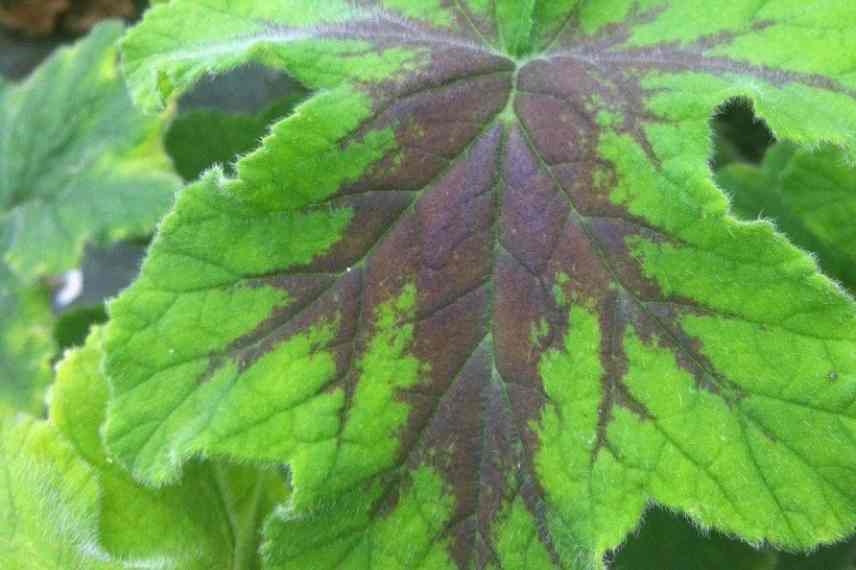
Pelargonium tomentosum ‘Chocolate’
Pélargonium odorant quercifolium: maritime pine scent
Pelargonium quercifolium forms a ramified bush with a pretty habit, which can reach a height of 90 cm to 120 cm. Its leaves and flowers exude a resinous scent reminiscent of maritime pine. All summer, from July to September, it produces purplish-pink flowers veined with garnet red. Grouped in umbels, they are fairly large and can measure up to 2.5 cm long. Leaves are dark green with a black centre, evergreen and glossy, with lobed, rounded shapes. Native to the south-west of the Cape Province in South Africa, Pelargonium odorant quercifolium is accustomed to dry, hot summers. Ideal for dry or coastal gardens, it is drought-tolerant and requires little maintenance.
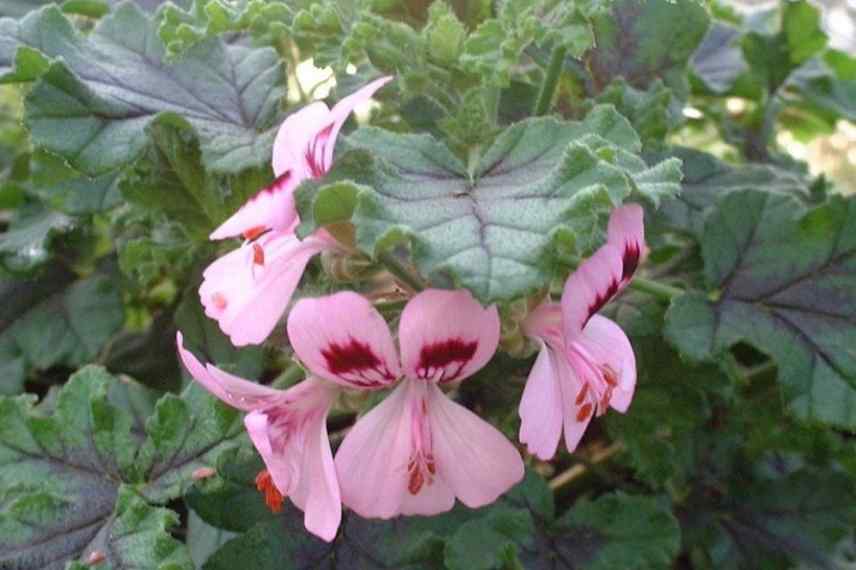
Pelargonium quercifolium with resinous pine scent
Pelargonium crispum 'Variegatum': lemon fragrance and ornamental foliage
Pelargonium crispum ‘Variegatum’ forms a small bush with an erect habit, and can grow to 80 cm in height. It is notable for its evergreen, ornamental foliage. Small rounded leaves, three-lobed and crinkled at the edges, are a soft grey-green, edged with a narrow band of white and pale yellow. Flowers appearing from June to September are pale pink streaked with red. When touched, it gives off an intense lemon fragrance, useful for repelling mosquitoes.

Pelargonium crispum ‘Variegatum’ (photos: Stickpen – Wikimedia)
Pélargonium odorant 'Lemon Fancy': intense citronella scent
For a powerful citronella scent, choose the Pelargonium odorant ‘Lemon Fancy’. This small shrub, with an upright habit and evergreen, divided and veined foliage, can reach 60 cm in height. Small pale pink flowers with a fuchsia centre appear from June to September alongside its small rounded, stiff leaves. Its citronella scent helps repel mosquitoes. It grows in full sun.
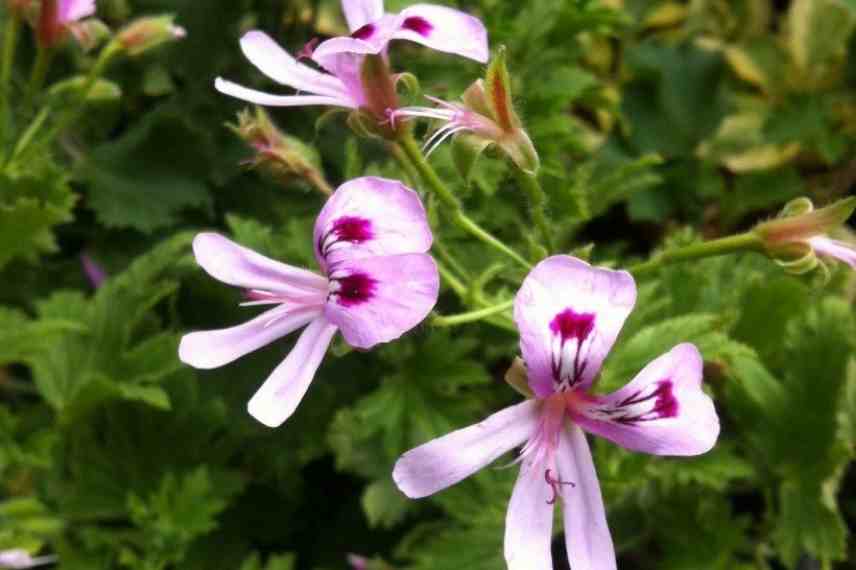
Pelargonium ‘Lemon Fancy’
Pélargonium 'Mosquitaway Louise': citronella scent to repel mosquitoes
With its small, bushy habit all in flower, Pelargonium ‘Mosquitaway Louise’ looks like a cloud of tiny pink-and-white butterflies. Leaves are small, rounded and crisped and remain very unobtrusive. They are noticeable mainly for their citronella scent, which repels mosquitoes. Foliage is evergreen, veined and dark green in colour. Pelargonium ‘Mosquitaway Louise’ can reach 35 cm in height and makes lovely flowering containers. Flowering lasts from June to September. Scented Pelargonium ‘Mosquitaway Louise’ is the result of a recent cross-breeding between Pelargonium crispum with scented leaves and a florist’s Pelargonium that is very floriferous and copes well with lack of light. Partly shaded positions are preferred. Regular feeding with fertiliser encourages abundant flowering. There are also Pelargoniums ‘Mosquitaway Eva’ and ‘Lizzy’.
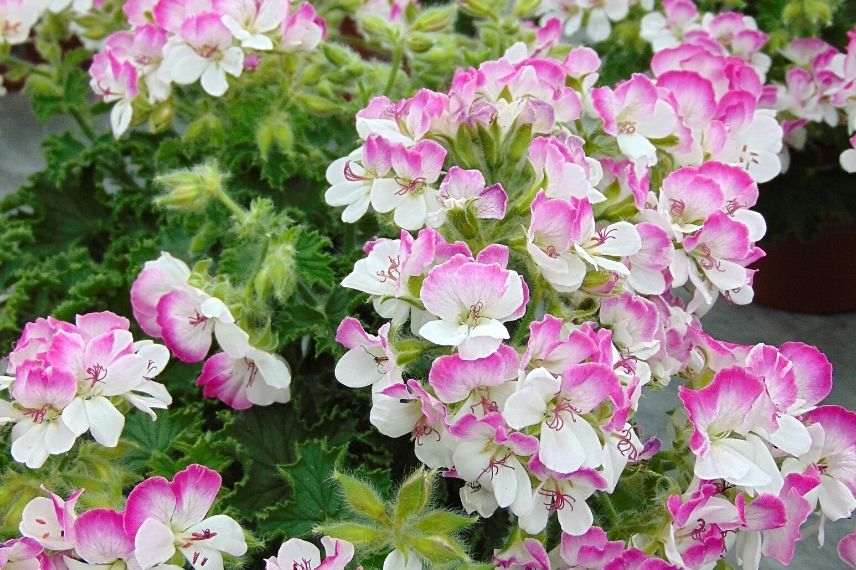
Pelargonium domesticum ‘Mosquitaway Louise’
Pélargonium 'Paton's Unique' : spicy aromas
Pelargonium scents vary. Some even exude spicy aromas. This is the case for the Scented Pelargonium ‘Paton’s Unique’. Its dark green evergreen leaves release spicy scents when brushed. From June to September, clusters of pink flowers tinged with pale red brighten this bush, which can reach a height of 80 cm and a width of 60 cm. Stems are ramified and become lignified over time. To compose a scent bouquet, you can pair it, for example, with a mint-scented Pélargonium odorant tomentosum.
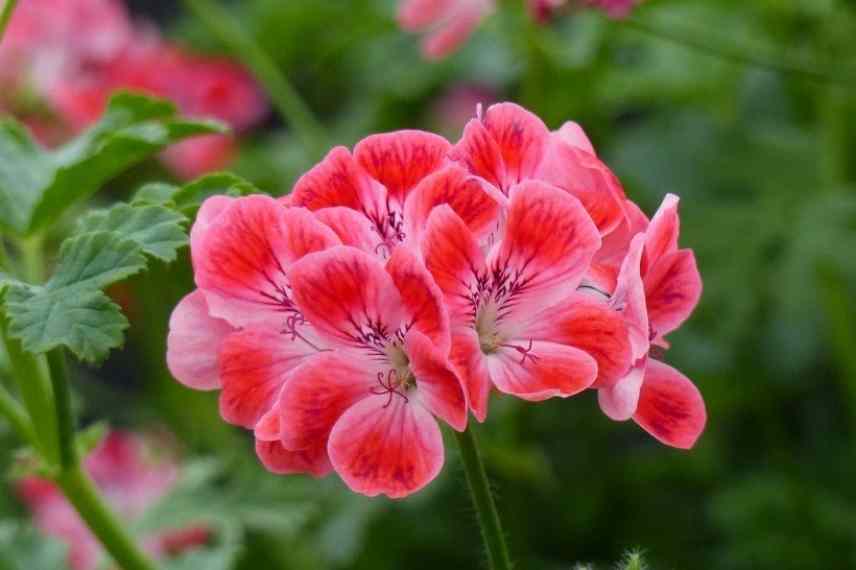
Pelargonium ‘Paton’s Unique’
Pelargonium odorant 'Endsleigh' : peppery aromas
Pelargonium odorant ‘Endsleigh’ bears evergreen, rounded and plicate leaves, marked by a central brownish‑purple blotch, that give off peppery scents. This shrub, 70 cm high at ripeness, bears umbels of small flowers in mauve to lavender‑pink shades, veined with garnet red, from June to September. Pelargonium odorant ‘Endsleigh’ tolerates drought and sea spray well. It can be grown in hanging baskets and its scent repels mosquitoes.
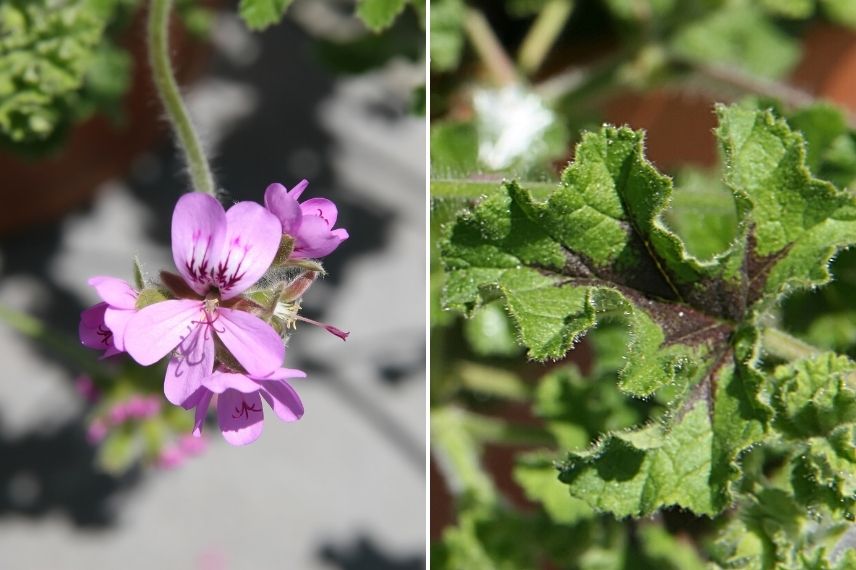
Pelargonium ‘Endsleigh’ (photos: David J. Stang – Wikimedia)
Pelargonium 'Concolour Lace' - English Red: a subtle hazelnut fragrance
With small red flowers and finely divided, downy leaves, Pelargonium odorant ‘Concolour Lace – Rouge d’Angleterre’ has much to recommend it. Crush its leaves and a delicate hazelnut scent fills the air. It forms a compact little shrub 35 cm tall and is particularly well suited to window boxes and flowering pots. From June to October, small umbels of delicate flowers in shades of pink to bright red appear. It derives from Pelargonium graveolens, which grows in mountains in the far north-east and far south-west of South Africa, in damp ravines. It prefers sunny positions.
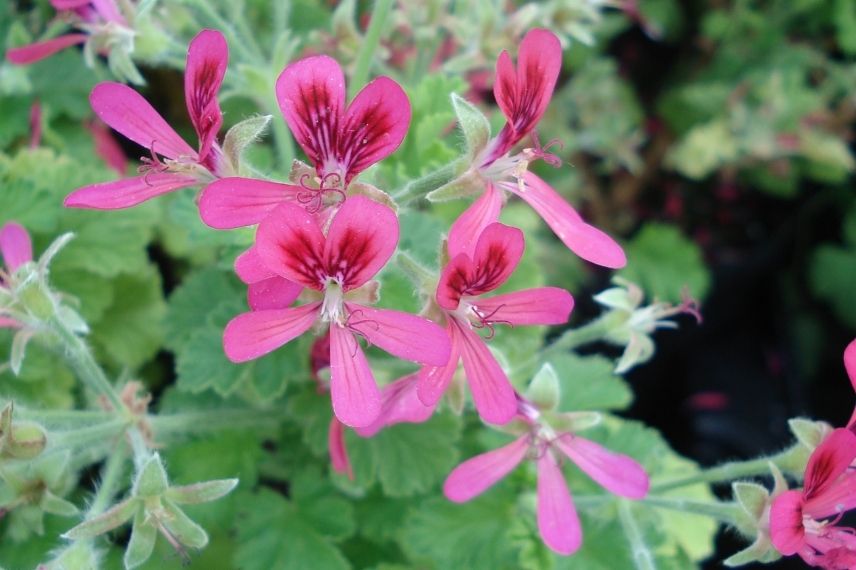
Pelargonium graveolens ‘Concolour Lace’
Pelargonium gibbosum: a rarity with pale yellow flowers
Pelargonium gibbosum is surprising. It bears pale yellow flowers, a colour rare among Pelargoniums, and emits a sharp, intense scent, particularly noticeable at night. From its stump about 8 cm in diameter at ripeness, tentacular stems grow that can reach 80 cm in length and need staking. It prefers dry feet and requires very little water and plenty of sun to grow. Its light green foliage resembles succulent plants. It is tended like a cactus, and its astonishing scent is a matter of taste. It adapts well to dry gardens or seaside locations.
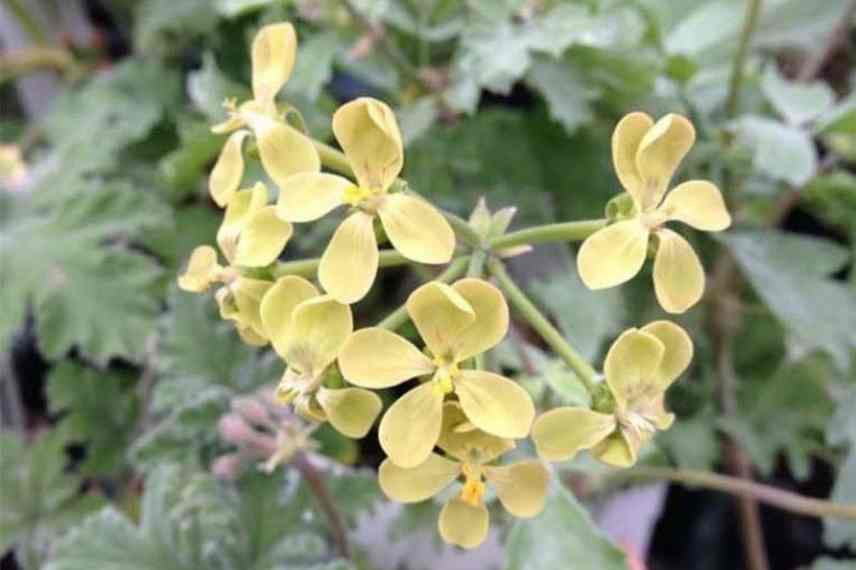
Pelargonium gibbosum
To go further
Discover our fact sheet on growing pelargoniums.
- Subscribe!
- Contents
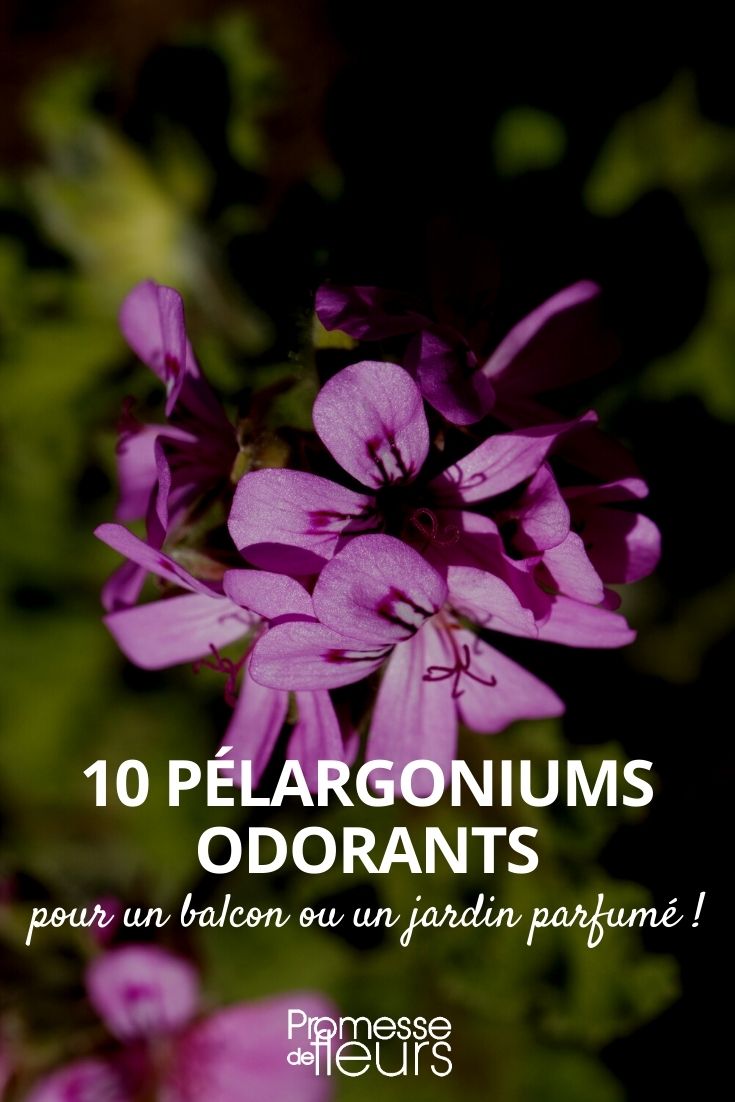
































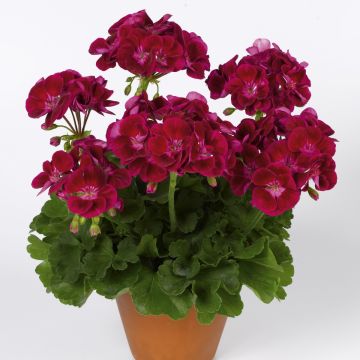
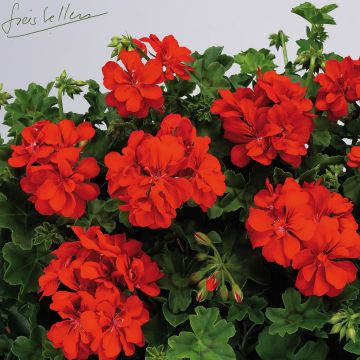
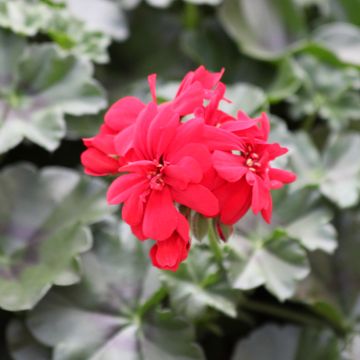
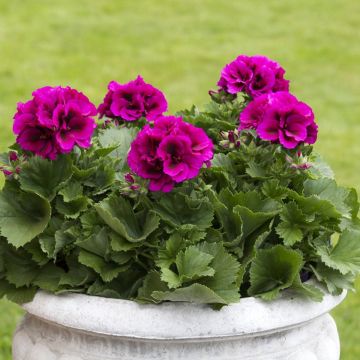
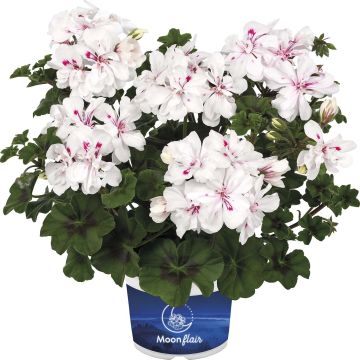
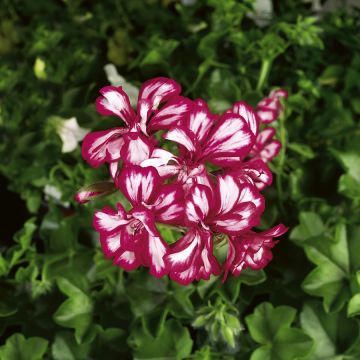
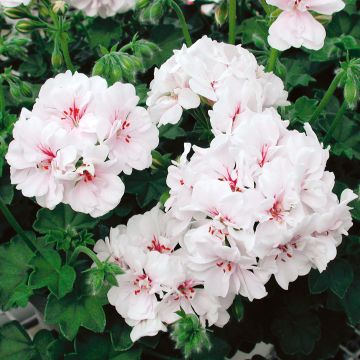
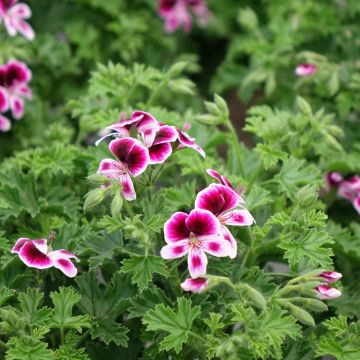
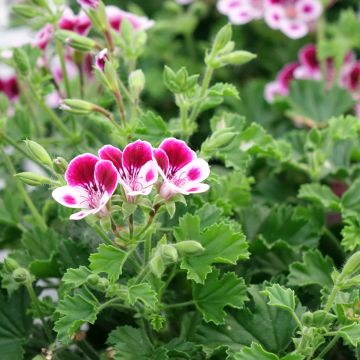
Comments